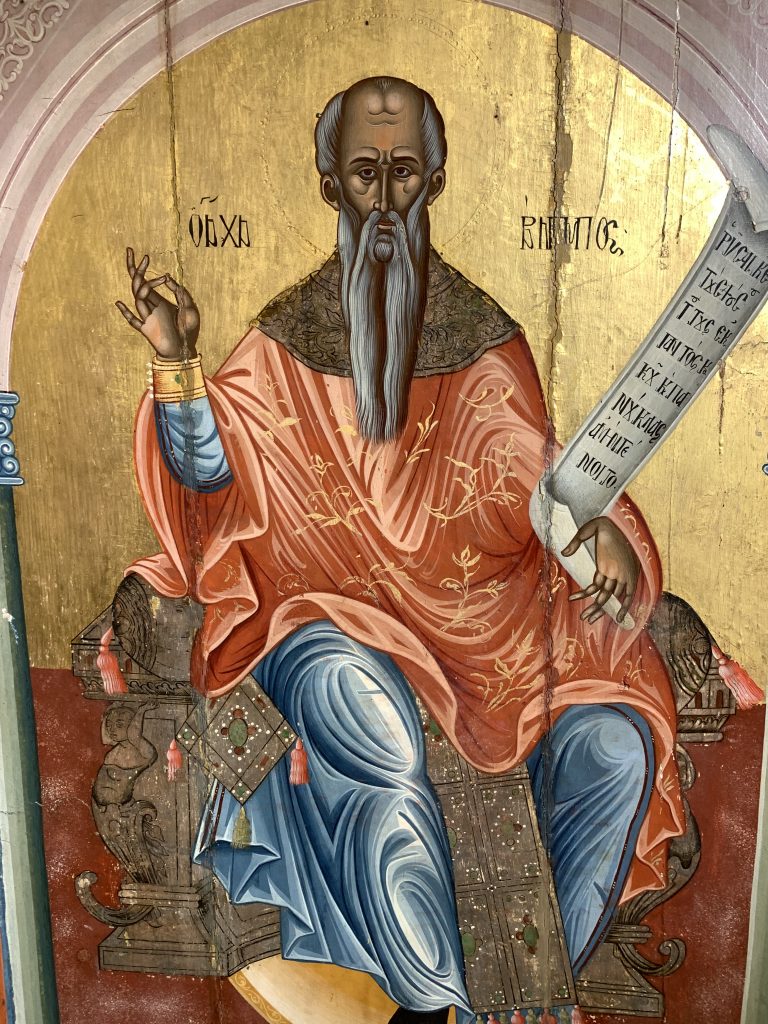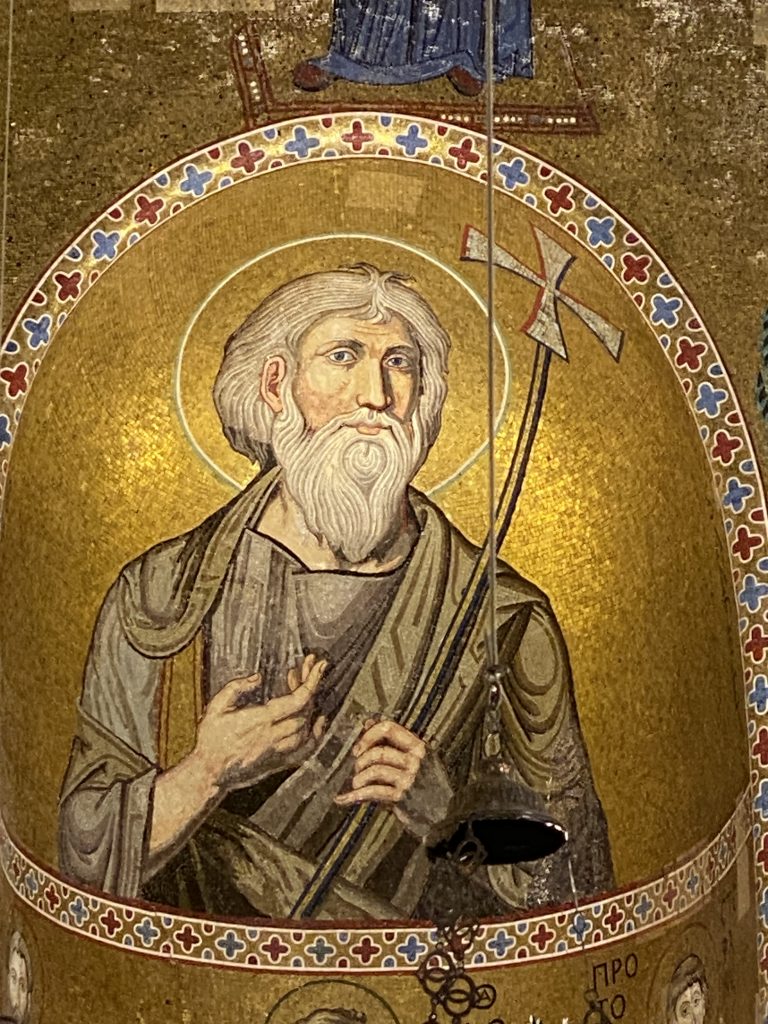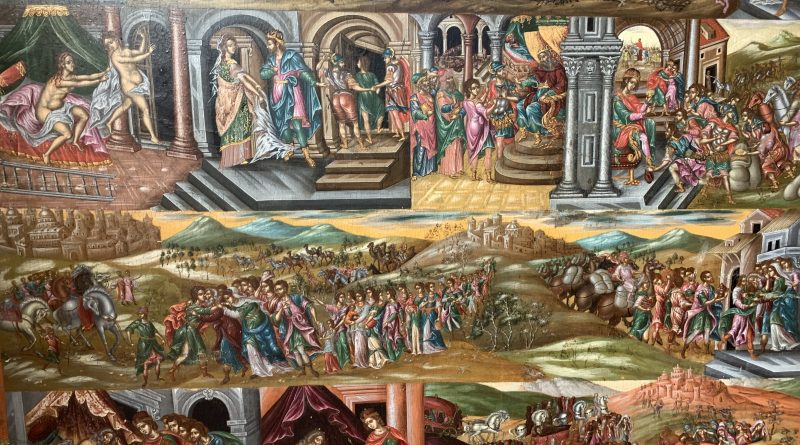The Byzantine Empire
The Byzantine Empire, also known as the Eastern Roman Empire, was the continuation of the Roman Empire in the eastern provinces after the fall of the Western Roman Empire. It lasted from approximately 330 AD, when Constantine the Great established Constantinople as its capital, until 1453, when the city fell to the Ottoman Turks.
The Byzantines preserved Greek and Roman knowledge, contributing to the fields of art, philosophy, and science. The empire was also a center for Christianity, with the Eastern Orthodox Church playing a significant role in its culture and politics.

The Byzantine Empire had a complex bureaucratic system. The emperor held absolute power, supported by a well-organized administrative structure. The Byzantine military was known for its strategic use of cavalry and innovative tactics, which helped protect the empire from various invasions.
Byzantine art is characterized by its religious themes, intricate mosaics, and iconic churches, such as Hagia Sophia, in Istanbul, which showcases the empire’s architectural achievements.

The empire was a hub of trade, connecting Europe and Asia. Its economy benefited from its strategic location along trade routes.It remained a significant power in the Mediterranean for over a thousand years.
Geography
At its height, the Byzantine Empire covered a vast area, encompassing parts of several modern countries in Europe, Asia, and Africa.Much of the Balkan Peninsula was under Byzantine control, including Macedonia and key cities like Athens and Thessaloniki.
The heartland of the Byzantine Empire, known as Anatolia or Asia Minor, was a crucial area, with Constantinople (modern Istanbul) as its capital.
The empire also had significant territories in what is now Bulgaria, especially during the earlier centuries. Parts of what is now Serbia and Albania were also included.
While control fluctuated, parts of southern Italy and Sicily were in the Byzantine Empire.The island of Cyprus was an important Byzantine territory.

In the Middle East Syria, including cities such as Antioch, was under Byzantine rule, as was Palestine and Jerusalem .Although it was lost to Arab conquests in the 7th century, Egypt was a significant province of the Byzantine Empire as were other parts of North Africa such as Tunisia and Libya
The empire’s borders shifted significantly over the centuries due to wars, treaties, and invasions but it boasts numerous historical sites that reflect its rich cultural and architectural heritage.
Top Byzantine sites:
Hagia Sofia, Istanbul, Turkey: Originally a cathedral, later a mosque, and now a museum, Hagia Sophia is renowned for its massive dome and stunning mosaics.
The Great Palace of Constantinople (Istanbul, Turkey): The primary residence of Byzantine emperors, this complex was an architectural marvel, although much of it is now in ruins.
Chora Church (Istanbul, Turkey): Known for its exquisite mosaics and frescoes, this church is a prime example of Byzantine art and architecture.
Basilica Cistern (Istanbul, Turkey): An ancient underground water reservoir featuring impressive columns and a serene atmosphere.
The Walls of Constantinople (Istanbul, Turkey): These formidable fortifications protected the city for centuries and are a testament to Byzantine engineering.
Mount Athos (Greece ): Home to numerous monasteries, this autonomous monastic state is a center of Orthodox Christianity and Byzantine heritage.
The Monastery of Hosios Loukas (Greece): A UNESCO World Heritage Site, this monastery features stunning Byzantine architecture and beautiful mosaics.
The Palace of the Grand Master (Rhodes, Greece): This medieval castle was originally a Byzantine palace and showcases the history of the island.
The Church of San Vitale (Ravenna, Italy): Famous for its stunning mosaics, this church is a prime example of Byzantine architecture in Italy.
The Theodosian Walls (Thessaloniki, Greece): These impressive fortifications once protected the city and are among the best-preserved Byzantine walls.
The Byzantine Museum of Athens (Greece): This museum houses an extensive collection of Byzantine artifacts, including icons, mosaics, and textiles.
The Acropolis of Thessaloniki (Greece): This site features remnants of Byzantine churches and fortifications, offering a glimpse into the city’s history.
Timeline
330 AD: Foundation of Constantinoplle by Constantine I.
527-565: Reign of Justinian I
610-641: Reign of Heraclius: Greek becomes official language.
674-678: First Arab Siege of Constantinople.
867-1056: Macedonian Dynasty: this period is regarded as the Military & cultural peak of the Empire
1054: The Great Schism.
1071: Battle of Manzikert: Loss of Anatolia.
1204: Fourth Crusade sacks Constantinople
1261: Recapture of Constantinople.
1453: Fall of Constantinople to the Ottomans, who rename the city Istanbul
Government and Emperor
The Byzantine state was a highly centralized, bureaucratic autocracy. The Emperor was an absolute ruler, considered God’s representative on earth. The complex bureaucracy, run by educated aristocrats, was essential for administering the vast empire and collecting taxes.
Religion: The Eastern Orthodox Church
The Great Schism of 1054 was a culmination of centuries of theological, political, and cultural differences, which formally split the Christian Church into the Roman Catholic (in the West) and the Eastern Orthodox (in the East) branches.
Economy and Trade
Constantinople was the heart of global trade for centuries, linking Europe and Asia.It controlled the western terminus of the Silk Road.It held a monopoly on silk production in Europe after smuggling silkworms from China.The Byzantine gold Solidus or Nomisma was the standard currency of the Mediterranean for centuries, renowned for its purity.
Military: A Professional Army
The Byzantine military was sophisticated and professional, relying on strategy, intelligence, and technology over brute force.It introduced a revolutionary administrative system where military governors controlled provinces and raised armies from soldier-farmers.The Greek Fire was a terrifying and secret incendiary weapon that could burn on water, crucial in defending Constantinople from naval attacks.
Art and Architecture:
Byzantine culture was a unique blend of Roman statecraft, Greek language and culture, and Christian faith. Known for its magnificent mosaics, icons, and domed architecture ,exemplified by the Hagia Sophia, a marvel of engineering for a thousand years.
Preservation of Knowledge:
Byzantine scholars meticulously preserved and copied ancient Greek and Roman texts. This repository of classical knowledge would later be crucial in fueling the Italian Renaissance after the empire’s fall.

The empire was responsible for the Christianization and cultural development of much of Eastern Europe, especially the Slavs. Saints Cyril and Methodius created the Glagolitic alphabet (precursor to Cyrillic) to translate the Bible, bringing literacy and Orthodoxy to nations like Russia, Bulgaria, and Serbia.
Legacy
From its capital , Constantinople , the Empire’s core Identity- Roman, Greek, and Christian – survived for nearly 1,100 years .The term “Byzantine” is a later invention by historians; the people living in the empire called themselves Romaioi (Romans).
For centuries, the Byzantine Empire acted as a buffer, absorbing the onslaught of Persian, Arab, and Turkish armies, allowing Western Europe to develop relatively undisturbed.
As a Preserver of Classical Knowledge it saved the foundational texts of Western civilization from being lost.
As an Architect of Orthodox Civilization, the Byzantines shaped the religious and cultural world of Eastern Europe and Russia. Moscow later saw itself as the “Third Rome,” the heir to Byzantine religious and imperial authority.

The Byzantine Empire was the longest lasting medieval power which provides us an unbroken record of medieval statecraft, diplomacy, and warfare.
Destinations: Turkey / Serbia / Greece / Italy / Syria / Egypt / Tunisia / Libya / Israel / Palestine / Bulgaria / Albania / Russia / Ukraine




